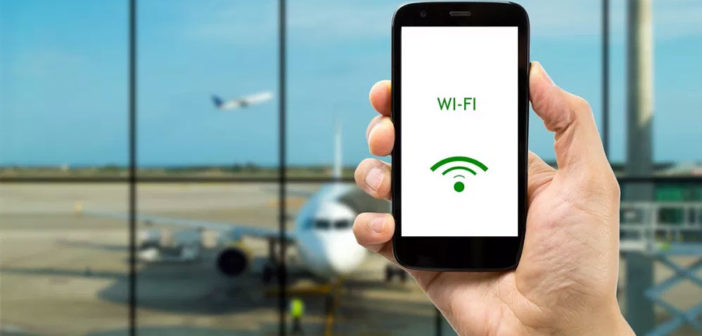Despite all of today’s digital advances, when it comes to the air travel experience, we’re still flying blind.
Think about it: Other than the ability to check in, download a boarding pass, and receive flight updates on our smartphones, has much changed over the last decade? We still go through the airport parking rigmarole, trying to estimate how much time to allocate to find a space and get from the car to the security gate. We can only guess how much time to allow for the security line.
As a frequent business traveler, I know this drill all too well. It’s like playing Russian roulette with a four-shooter—one in four travel experiences will be subpar.
But this is all about to change, thanks to smart technologies that can deliver personalized information to passengers based on their location and needs. More specifically, two constructs—artificial intelligence (AI) and virtual Bluetooth Low Energy (vBLE)—are transforming the travel experience and promise to have a positive impact on millions of travelers in the years to come.
In the airport, your smartphone, computer, and tablet all put out unique Bluetooth Low Energy signals (when Bluetooth is turned on) that interact with battery-powered devices on the walls to deliver personalized experiences based on your location. In the past, humans had to physically survey the radio frequency (RF) environment in an airport to determine where to place these BLE devices and how to manually calibrate them. If anything changed in the environment, these devices had to be physically moved and recalibrated, or both, making indoor location expensive, time consuming, and inefficient.
This changes with new AI technologies like unsupervised machine learning. Now the RF environment can be continuously updated in real-time, eliminating the need for manual calibration. In addition, virtual BLE devices have replaced battery-powered ones, enabling messages to be automatically configured and changed via software. Much like AI-driven cars learn how to handle fluid environments, AI-driven wireless networks with virtual beacons do the same, ensuring an optimal location and connectivity experience for all mobile users.
Here is what a day in the life of an air traveler could look like in the not-so-distant future:
Before leaving home for the airport, you pull up an app on your smartphone. AI systems have predicted how many spaces will be open at the parking garage, and you can see if your favorite ones may be available. While apps currently exist to track which spaces are open at a fixed moment in time, AI will tell you the likelihood of finding a space in a particular spot at the beginning of the trip and recommend alternatives.
As you head to the airport, BLE technology combined with AI will tell you the length of security lines, help you navigate the terminal to find the closest lunch spot, estimate your walking time to the gate, and even notify you of deals in terminal stores for that Valentine’s Day gift you forgot to buy.
A 2017 Deloitte report paints this picture: As travelers walk through the terminal, “a system checks and notices the club is currently only at 50% occupancy and sends the passenger a time-sensitive offer for discounted lounge access. With a click or blink of an eye, the airline charges the passenger’s digital payment account or allows them to use frequent flier miles. They are greeted by the club agent as an expected guest as they walk in.”
On the plane, the Internet actually works, thanks to initiatives like one announced in February by a group of airlines and communications companies to provide passengers with faster, more reliable connection using satellite technology.
Once you get to baggage claim, you know your luggage has made it and when it will pop out onto the carousel because it has been tagged with a sensor that sends the information to your smartphone. Your phone app then tells you where to get a taxi, Uber, or rental car, and you’re on your way.
A 2017 survey of more than 10,000 air travelers around the world by the International Air Transport Association revealed that they don’t consider this level of convenience frivolous; they expect technology to give them more control over their travel experience.
Thanks to emerging technologies, we may soon start looking forward to our trips to the airport.
–
This article first appeared in www.fortune.com
Seeking to build and grow your brand using the force of consumer insight, strategic foresight, creative disruption and technology prowess? Talk to us at +9714 3867728 or mail: info@groupisd.com or visit www.groupisd.com



